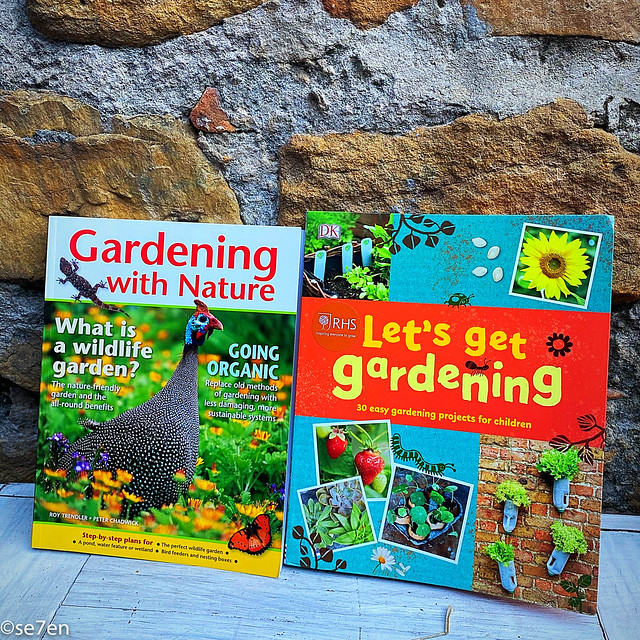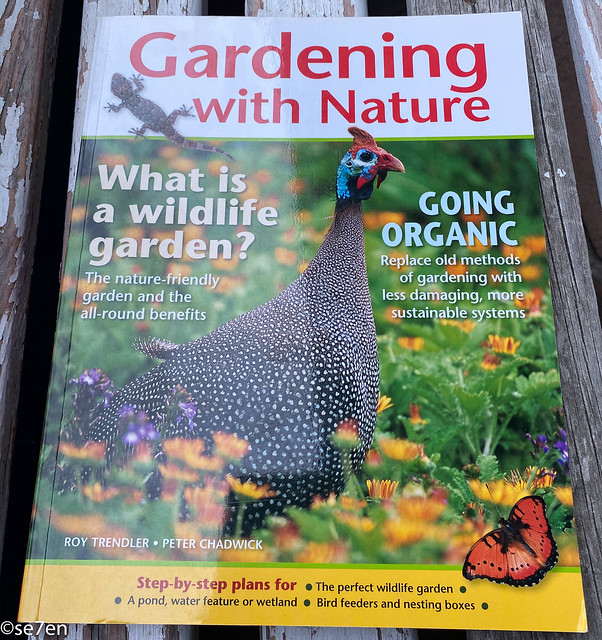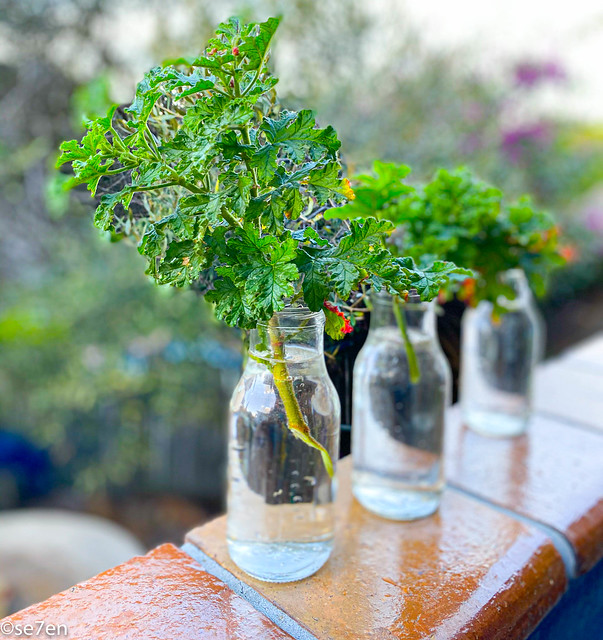Today is Earth Day and while we would typically dash out and do something for the earth, today we are at home and it seems appropriate, while continuing with our two books a day series, that we include two gardening books, packed with things we can do for the earth… right at home. We have been working so hard in our garden over the last few weeks of lockdown and these two books have been sitting on my review shelf forever… waiting firstly for some cooler weather, and secondly for time to get out and get our hands dirty. One thing we have had over the lockdown is time and we have been making the most of it…

Like most people we inherited our garden with the house and we have done several little projects to change and upgrade it over time. Possibly the most successful garden project was our Keyhole Kitchen Garden. But then we had a severe drought and before you knew it, a couple of years with almost no rain and our garden returned to its desert origins… or rather since we live at the seaside a sand dune. It was way past time to tackle this project and just lately we have taken it on with vigour.

Gardening with Nature by Roy Trendler and Peter Chadwick

The first book, Gardening with Nature from Struik Nature, was really the stepping stone of encouragement that I needed towards a nature friendly garden. After attending a talk about school gardens popping up all over greater Cape Town, in an effort to create a natural corridor for wildlife to cross the vast expanse that is now urban sprawl… I have been looking for ways to introduce nature and wild life back into our garden for a while now.
This book is geared more towards gardens all over South Africa, and not just gardens in our very special fynbos region. It is full of detailed plans and resources to help you to create different zones within your garden, different zones that will attract different varieties of wildlife. In our case wildlife is limited to birdlife, insects and a couple of reptiles. From time to time we also get baboons and once or twice a porcupine, neither of these will show any respect for your garden, or your planting and planning. So smallish natural visitors then.
Part 1: The Garden

After an introduction and a chapter on how to plan and prepare your garden, the book dives into chapters that divide your garden into five potential regions, depending on the size and location of your garden, of course.
- The Open Area
- The Exclusion Area
- The Canopy Corridor
- The Wetland Area
- Single Habitat Gardens
With each of the areas there are easy and completely do-able ways to implement projects, and the book ends with a chapter on how to maintain these areas. We were really interested in the wetland garden chapter… and the single habitat garden that was packed with ideas for us to include interesting animals and wildlife into our garden.

Apart from that we live in the Fynbos region of South Africa, which means we have a very specific kind of garden… poor sandy soil and winter rainfall is what these plants like. I lesson I learned very early on in our gardening adventure is not to buy plants from any old nursery… you need to buy plants that are born and raised in our area, under our hardy plant conditions. I highly recommend the Veld and Sea Nursery, which is close to Cape Point and open to sell to the public on weekdays, and where we would normally buy our fynbos plants. You can find their contact details here.

But right now, during the lockdown, when we are unable to go to the store we have made every effort to create some new plants of our own, to fill in and cover up the ugly retaining wall at the back of the house, against the mountainside… in fact after reading this book, for the first time ever… I see that wall as a wildlife project, rather than an eyesore. It’s going to take a little time, but it is something that we can really concentrate on right now.
Part 2: The Wildlife

The second part of the book is focused on the types of wildlife that you can expect in your natural garden… Birds, small mammals, reptiles, amphibians, snakes, insects and even fish. We love and adore the local snakes that find a place to hide and sun themselves in our garden, but there is so much more that we can be doing… stick piles, leaf piles and so on, are things that we can easily get our heads around. The ideas of things to feed birds as well as creating places for them to hide inspiring and I predict a little bird feeding corner springing into action this autumn. It also has ideas on how to get rid of unwanted visitors. It is all very well to welcome a little streepmuis (striped mouse), it is quite another to have their larger big brown relatives roaming around.

RHS Let’s Get Gardening from DK BOOKs

I absolutely cannot resist a gardening book from DK Books. There projects are so inspiring and I know if I leave these lying on the coffee table that our garden will get an instant spruce up. This book is absolutely packed with page after page of beautiful projects… colourful photographs and step by step instructions, suitable for indoors and outdoors, big spaces and little spaces. This book is the perfect inspiration to encourage your children to take a few steps into the magical land of gardening. The book is divided into three parts:
Kitchen Garden

Keep in mind the part of our garden that we have missed the most from years gone by has been the little salad patch that we had at the front gate… little projects have begun and died and begun and failed again and again. It was time to totally rethink and get growing. This part of the book is absolutely packed with edible gardening tricks and the kind of project that will get your fussy vegeatable eater to try almost anything. There are projects for growing all sorts of vegetables, starting with the most essential: herbs, and hen everything else… potatoes, beetroots, lettuces and spinach, courgettes and pumpkins and even fruit trees… really the world is your oyster… go forth and plant your veggies!!!
Wildlife Garden

The Wildlife garden got us to stop talking about upgrading our insect hotel and creating a somewhat grander version of our old one, for our very small residents. I love the idea of a miniature nature reserve… and for the first time ever we managed to grow sunflowers, and collect the seeds so that we can plant a whole lot more next summer. Our next project is definitely creating a water garden, we are waiting for nurseries to open again, so that we can add some plants to our potential water garden. Absolutely cannot wait for this!!!
Recycling Garden

This section inspired us to finally, finally organise our compost into layers, and to expand our succulent garden from just a leaf or two to loads of little plants… this is really easy gardening, even for the most beginner of beginners, and you get good results really quickly, so quick and easy fun. We haven’t managed to attract an owl into our garden with an old gumboot, but we have planted some salad flowers into my very old broken hiking boots and we eagerly await the results.


Affiliate Links for Books Mentioned in This Post
A link to Gardening with Nature… on the Penguin Random House/Struik Nature Website.
And a link to RHS Let’s Get Gardening on Penguin Random House Website, and a link to the DK Books website, with pages you can take a peek at, inside the book.

Thank you to Penguin Random House South Africa and Struik Nature for supplying this fabulous collection of books for review purposes. This is not a sponsored post and all the opinions are as usual my own.
